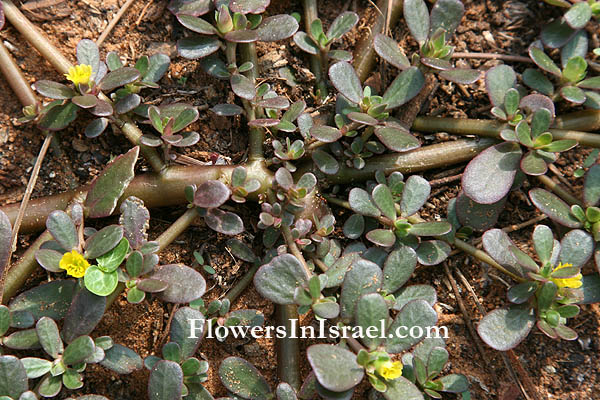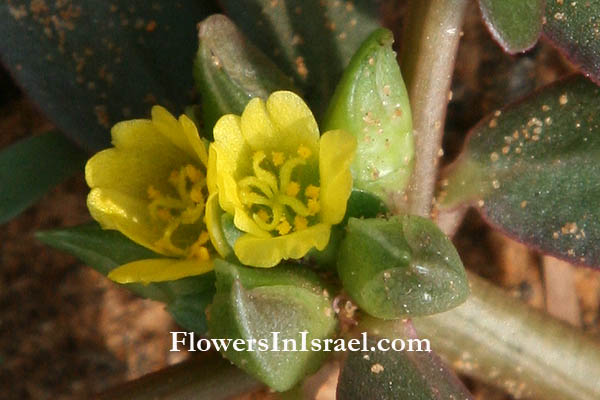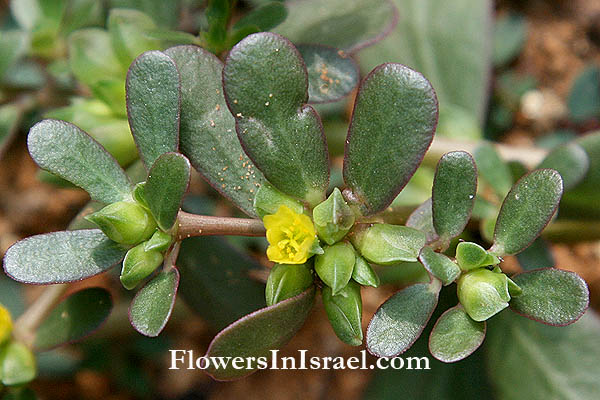Hebrew: רגלת הגינה, Arabic: رجلة, Egypt: رجلة "Rigla"
| Scientific name: | Portulaca oleracea L. | |
| Common name: | Little hogweed, common purslane, purslane, Garden purslain | |
| Hebrew name: | רגלת הגינה | |
| Arabic name: | رجلة | |
| Egypt: | رجلة "Rigla" | |
| Family: | Portulacaceae, רגלתיים |

|
| Life form: | Therophyte, annual | |
| Succulence: | Stem + leaf succulent | |
| Stems: | Prostate, glabrous, succulent herb; branches many, leafy, brittle | |
| Leaves: | Alternate, opposite, sessile, fleshy, deltoid to oblong-obovate, entire | |
| Inflorescence: | Flowers sessile, in dense clusters | |
| Flowers: | Sepals unequal, joined into a short tube at the base; petals yellow, slightly joined, longer than the sepals; stamens 7-15 | |
| Fruits / pods: | lid-capsule, unilocular, thin-walled; seeds reniform, tuberculate, black | |
| Flowering Period: | January, February, March, April, May, June, July, August, September | |
| Habitat: | Cultivated areas (weeds) | |
| Distribution: | Mediterranean Woodlands and Shrublands, Semi-steppe shrublands, Shrub-steppes, Deserts and extreme deserts, Montane vegetation of Mt. Hermon | |
| Chorotype: | Plurireginal, boreal-tropical | |
| Summer shedding: | Ephemeral |

Derivation of the botanical name: Portulaca, from Latin portare, "to carry" and lac, "milk", referring to the milky sap.Some people say that Portulaca means "little door", because of the way its capsule opens. Pliny (23–79) named the plant porcil-aka, a word with no known meaning that, in time, became portulaca. Then, because it sounded like “porcelain,” the plant’s common name in England became “purslane,” a word in use since the fourteenth century. oleracea, olus, holus, "kitchen vegetables"; aceus, resembles, of..., ...like, mixture using, fragrance of; meaning "of kichen vegetables". The Hebrew name: רגלת, reglat, Post Biblical Hebrew purslane; related to Arabic: rijl, rijla (= purslane); probably derived from רגל, regel, respectively Arabic rijl (= foot).
It is a source of Vitamins A, C, E, and calcium as well a rich source of omega-3 fatty acids. Purslane has been eaten as a vegetable, particularly fresh. The leaves are used in Fattoush salad, a typical dish eaten as a starter in Middle Eastern cuisine. See the list of Medicinal herbs in Israel, the parts used and their medical uses to treat various diseases. 
|